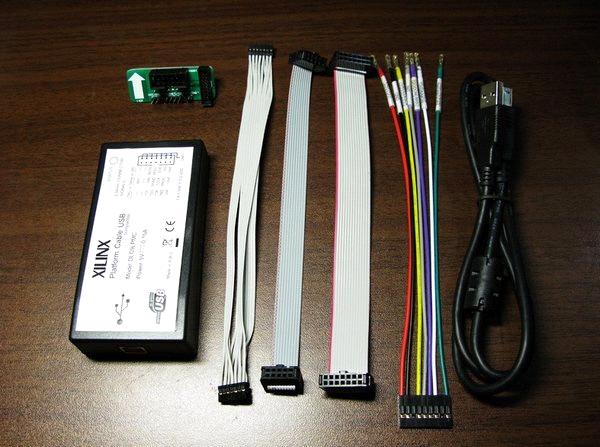Platform Cable Usb Ii Xilinx Vivado


Buy Xilinx HW-USB-II-G. Reliable and easy-to-perform configuration of Xilinx devices. How To Google Map For Blackberry Curve 8520. Platform Cable USB II attaches to. Xilinx iMPACT software or Vivado. This AR gives an overview of how to manually install Xilinx Programming Cable drivers.
Hi, I have installed Vivado Webpack 2014.4 on Centos 6.5 running in a Virtualbox image. Lagu Janji Suci Youvie N Nuno more. I have run the setup using 'sudo xsetup' and selected to install cable drivers as well.
The USB cable is not plugged in during installation. After installation, I plugged in the USB cable and set Virtualbox to capture the device.
In a Linux terminal, I checked the USB cable is detectable by running: [adminuser@localhost ~]$ lsusb Bus 001 Device 001: ID 1d6b:0001 Linux Foundation 1.1 root hub Bus 001 Device 002: ID 03fd:0008 Xilinx, Inc. [adminuser@localhost ~]$ However, in Vivado ->Hardware Manager ->open target, I get the screen below. I am unable to move to the next page. Can someone advise what is the problem?
Description This AR gives an overview of how to manuallyinstall Xilinx Programming Cable drivers. Solution The Xilinx ISE Design Suite and Vivado installers will attempt to install your cable drivers. Across varying platforms and user configurations there can be problems or failures with the install. This Xilinx Answer gives an overview of how a user can manually install the drivers without re-running the full installation. On Windows • Disconnect the Xilinx USB cable.
Alternatively, you can disabled theUSB cable in the device manager first then re-enable them in step 5; in this case, you will not even need to reboot. • Navigate to bin [nt nt64] or [nt nt64] in an installed area.
• Run wdreg -inf windrvr6.inf install • Run wdreg -inf xusbdrvr.inf install • Connect the Xilinx USB cable. To get sudo access on a machine, file a helpdesk ticket requesting sudo access to install cable drivers. You can check which commands can be run by running '/tools/xint/bin/sudo -l'. To install cable drivers: • Go to/bin/[lin lin64] or /bin/[lin lin64] in an installed area. • Copy the install_script directory to /tmp.
• Run '/tools/xint/bin/sudo /tmp/install_script/install_drivers/install_drivers' • Run '/tools/xint/bin/sudo chmod 666 /dev/windrvr6' Full sudo -s access • Run sudo -s • Go to/bin/[lin lin64] or common/bin/[lin lin64] in an installed area. • Copy the install_script directory to /opt. • Run './install_drivers' in /opt/install_script/install_drivers. • Add windrvr6 read/write access by running 'chmod 666 /dev/windrvr6'. Additional steps to make chmod permanent on reboot (Red Hat 4) • Open this file with your favorite text editor (requires sudo access): /etc/udev/permissions.d/50-udev.permissions • Add the line to the end of the file: windrvr6:root:root:0666 Additional steps to make chmod permanent on reboot (Red Hat 5+) • Open this file with your favorite text editor (requires sudo access): /etc/rc.local (or /etc/rc.d/rc.local) • Add the line to the end of the file. To install libusb, see. Uninstalling Cable Drivers On Windows • Navigate to xfndry HEAD cust_rtf bin [nt nt64] or common bin [nt nt64] in an installed area.